Introduction
Determining the optimal locations for wind farms requires a meticulous examination of various geographic and environmental factors. Central to this process is the assessment of wind potential, determined through detailed meteorological data to gauge average wind speeds and patterns crucial for project viability. Additionally, proximity to existing infrastructure is a significant consideration, influencing the cost and logistics of integrating the wind farm with the power grid.
Land use compatibility is another vital aspect, with preference given to areas of minimal human activity and lower residential density to reduce noise and visual impact concerns. As wind farms edge closer to populated areas, careful site selection becomes paramount to mitigate potential adverse effects on property values and community well-being. The rise in renewable energy projects underscores the necessity for strategic planning and informed decision-making to balance economic, environmental, and social impacts effectively.
Determining Suitable Land for Wind Farms
Recognizing appropriate terrain for energy generation sites entails assessing multiple geographic and ecological elements. 'Airflow potential is paramount, often assessed through detailed meteorological data to determine average air speeds and patterns critical for project feasibility.'. Proximity to current infrastructure is another important factor, as it affects the expense and simplicity of linking the energy project to the grid. Land use compatibility is essential, with areas featuring minimal human interference and lower residential density being preferred to mitigate noise and visual impact concerns.
Wind resource assessments play a vital role in this process. These evaluations, performed with extensive climatic information, assist in forecasting the potential for generating power at a site. For instance, the landscape in areas such as Lompoc, which is at an angle to the main air flow from the ocean, makes it a perfect site for a renewable energy farm.
Furthermore, the swift growth of turbine-based initiatives has resulted in heightened debate, especially in more crowded regions. Research shows that energy projects in urban regions with populations exceeding 250,000 can adversely affect property values, in contrast to those in rural locations where no notable effect is seen. This has been a critical finding in recent research, emphasizing the need for careful site selection to minimize adverse effects on local communities.
The average distance to the nearest turbine for a typical house in the U.S. has significantly decreased from 148.6 miles in 2005 to just 37.1 miles in 2020. This proximity has heightened concerns over property values, noise, and visual impacts, making it essential to provide communities with accurate information for informed decision-making. As highlighted by specialists, grasping these elements is essential to tackling the intricate issues related to energy facility development and promoting sustainable advancement in the renewable power industry.
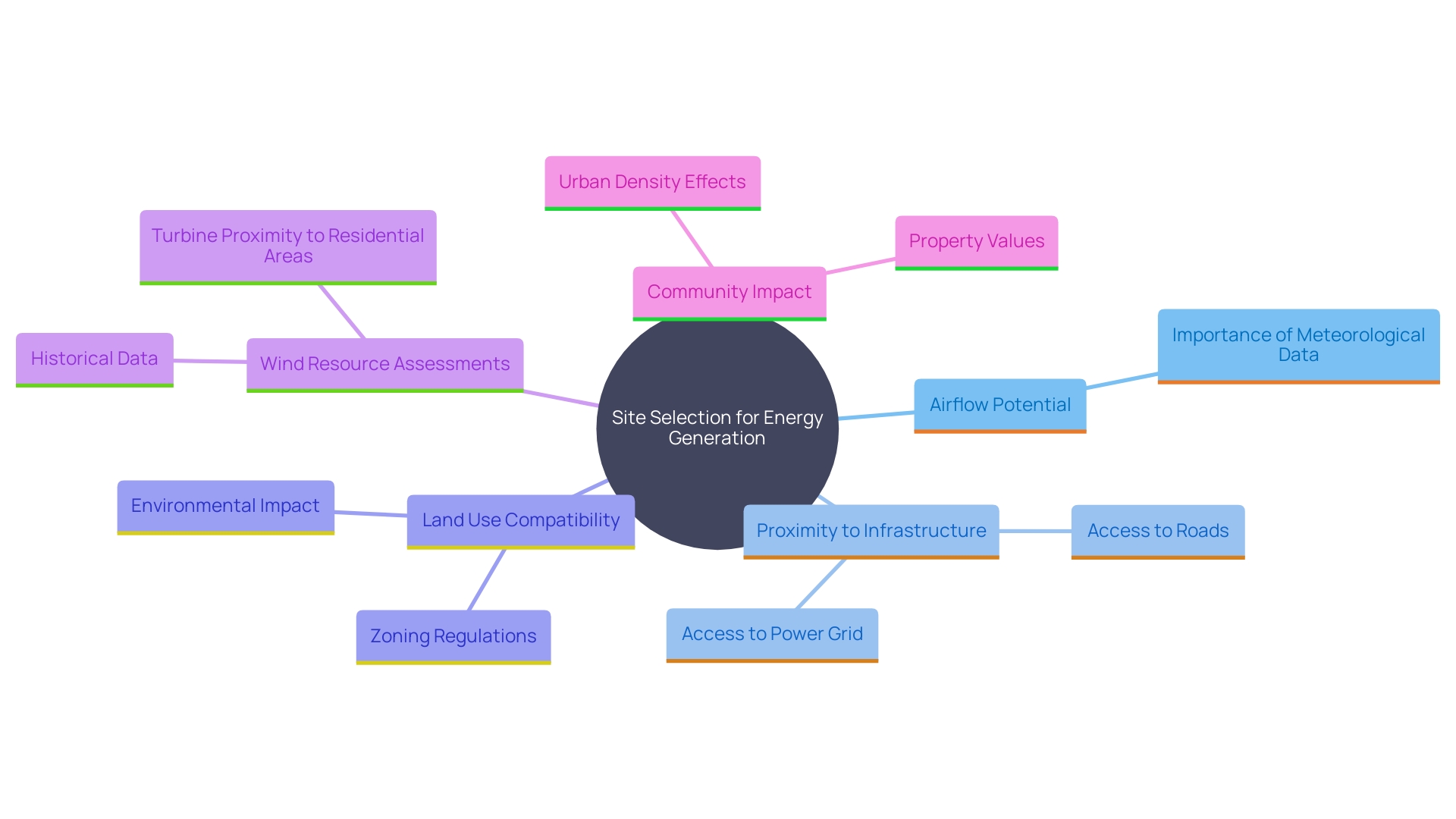
Key Factors in Assessing Wind Farm Land Requirements
Numerous elements greatly affect the space needs for energy projects using turbines. These include turbine type and size, rotor diameter, and the specific layout of the energy farm. Additionally, local zoning laws and regulations can impose restrictions on property use, affecting how much space is necessary. The need for buffer zones to limit noise and shadow flicker also plays a crucial role. It is essential to engage with local authorities early in the planning process to navigate these regulations effectively.
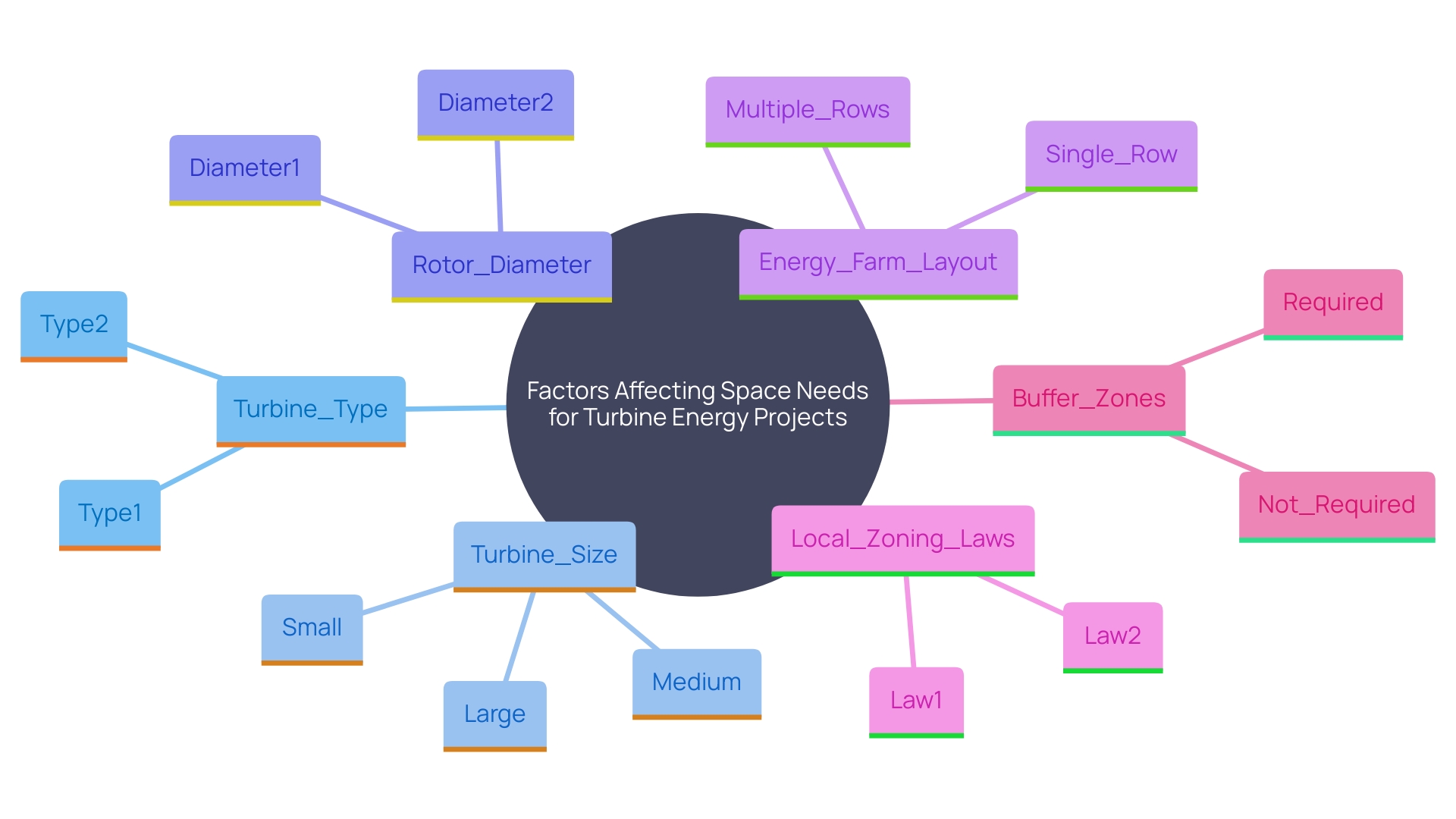
Average Land Use for Wind Turbines
One individual turbine usually needs between 0.5 to 1.5 acres of territory. However, taking into account the spacing needs to reduce turbulence and enhance energy generation, a turbine array's overall area can be considerably larger. Turbines typically require a distance of seven rotor diameters between them, which indicates that a farm with multiple turbines can cover several hundred acres. Based on recent studies, turbines take up only around 5% of the space they are constructed in, permitting the remaining area to be utilized for other activities, like farming. This creative land use method can assist in minimizing the effect on the terrain and make renewable projects more acceptable to local communities. As Sarah Jordaan, principal investigator of the study, highlights, “Clever siting, use of existing infrastructure, multiple use of landscapes—all these things can really contribute to solutions in areas where wind power is acceptable to the local people.”
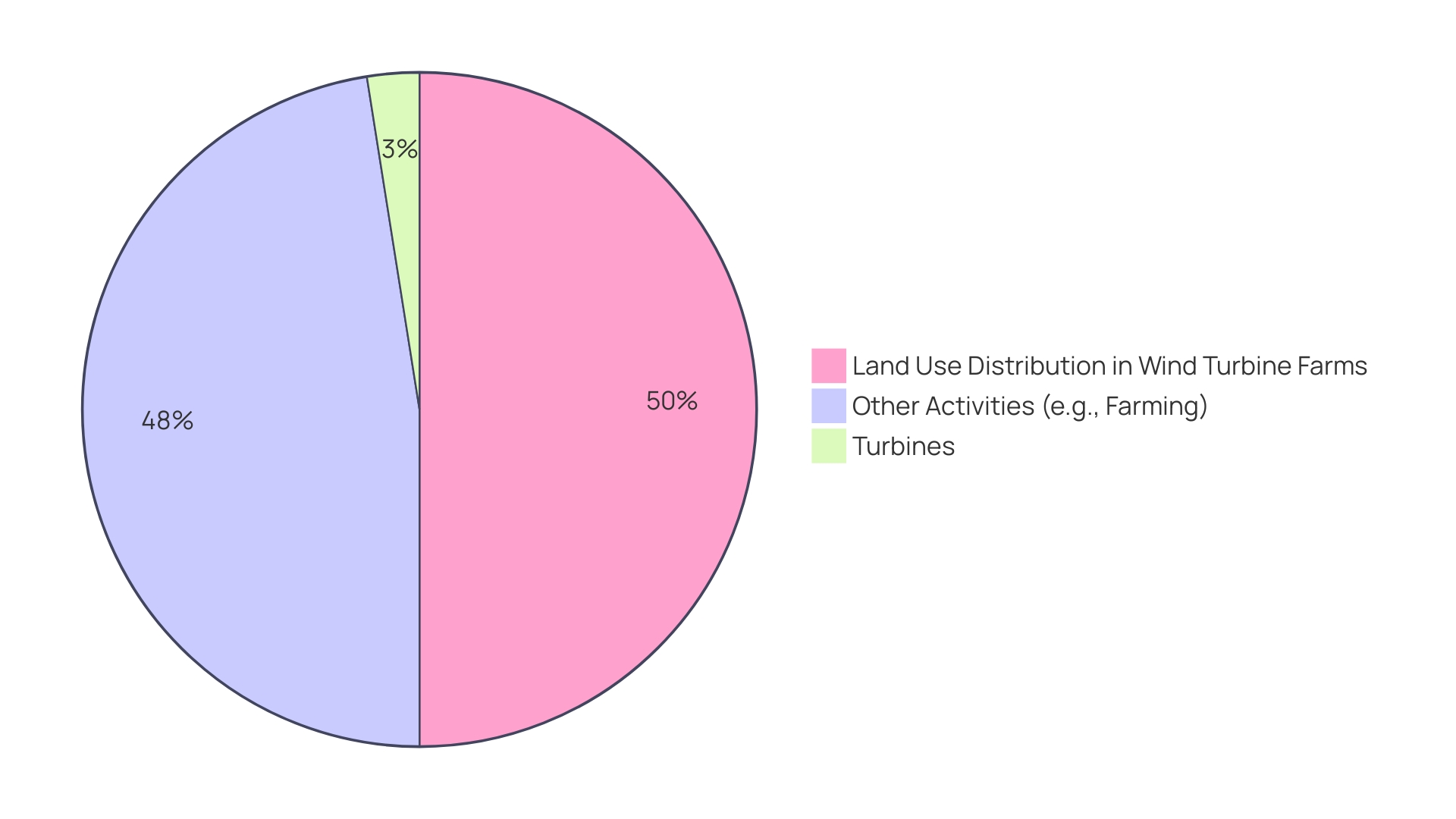
Spacing Considerations for Wind Turbines
The optimal spacing of wind turbines is essential to maximize energy production and mitigate wake effects. Industry guidelines suggest placing turbines at a distance of five to ten rotor diameters apart, modified for air direction and local terrain. This spacing ensures each turbine captures sufficient air flow, minimizing interference from adjacent turbines. Furthermore, coordinating the design with existing air currents can greatly improve overall efficiency. 'According to the National Renewable Energy Laboratory (NREL), most modern turbines are designed to face the breeze, a principle known as the 'Danish concept,' which has been standard since the 1980s to optimize energy capture.'. Recent advancements in turbine arrangement optimization, including the exploration of quantum computing techniques, indicate promising avenues for further enhancing energy production.
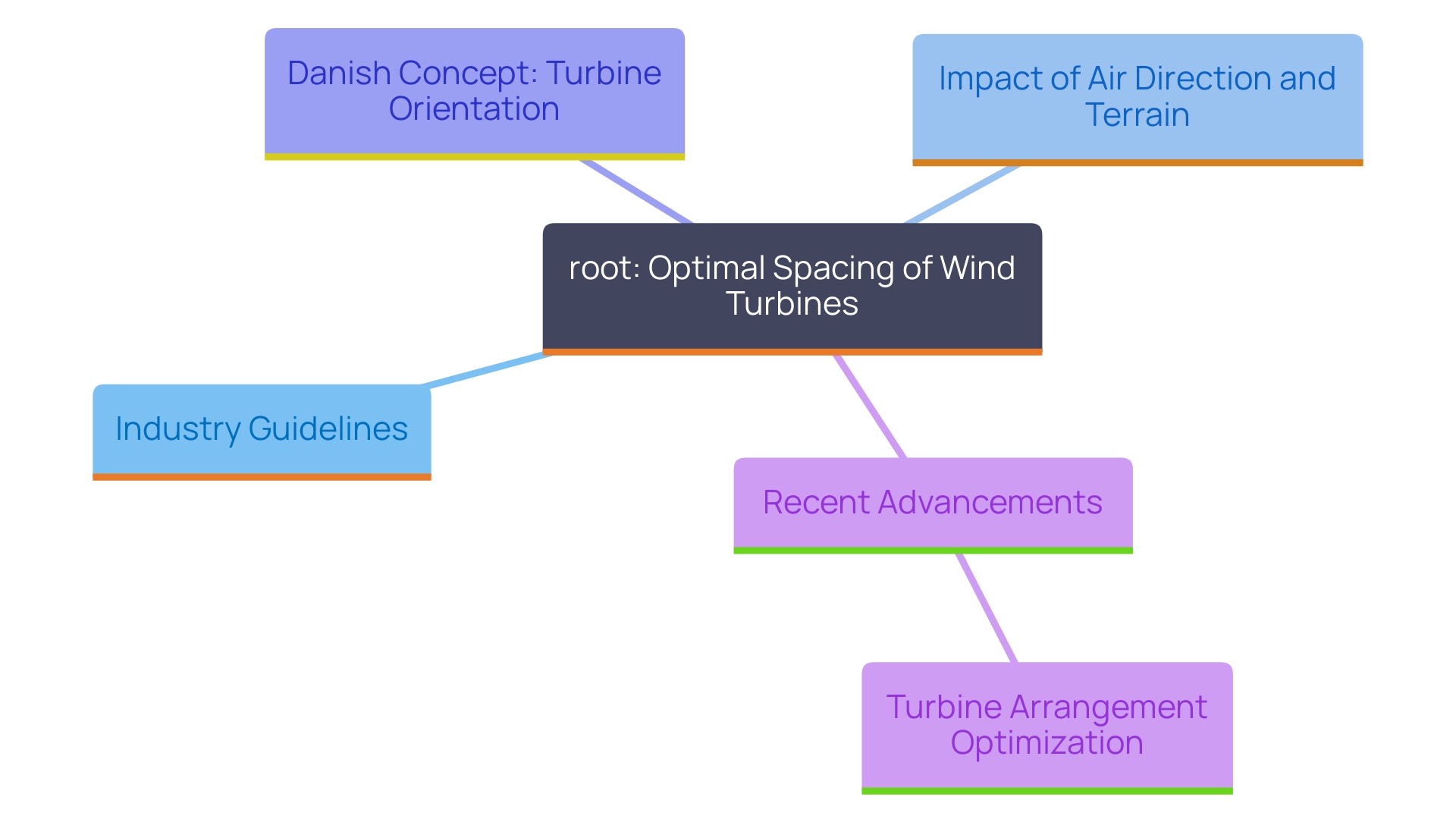
Infrastructure Needs Beyond Turbines
Beyond the land occupied by turbines, wind farms demand significant additional infrastructure, including access roads, substations, and maintenance facilities. Access roads are crucial for transporting equipment and personnel during construction and ongoing maintenance. Substations play a vital role in converting the generated electricity for distribution, ensuring efficiency and reliability. Assessing these infrastructure needs at the project's outset is essential for feasibility and sustainability. As stated by Jeff Marootian, Principal Deputy Assistant Secretary for Energy Efficiency and Renewable Resources, "We have a unique chance to deliver the economic, health, and climate advantages of clean resources to individuals throughout the country." 'Given the complex landscape of renewable resources planning and approval, understanding the specific requirements and regulations in each state is critical.'. For instance, the International Renewable Energy Agency (IRENA) reports that renewable power generation capacity has seen substantial growth over the past decade, highlighting the importance of well-planned infrastructure to support this expansion. The implementation of solutions like EasyPermits, which streamline permitting processes, can further enhance the efficiency and transparency of these projects, ultimately contributing to a secure energy future.
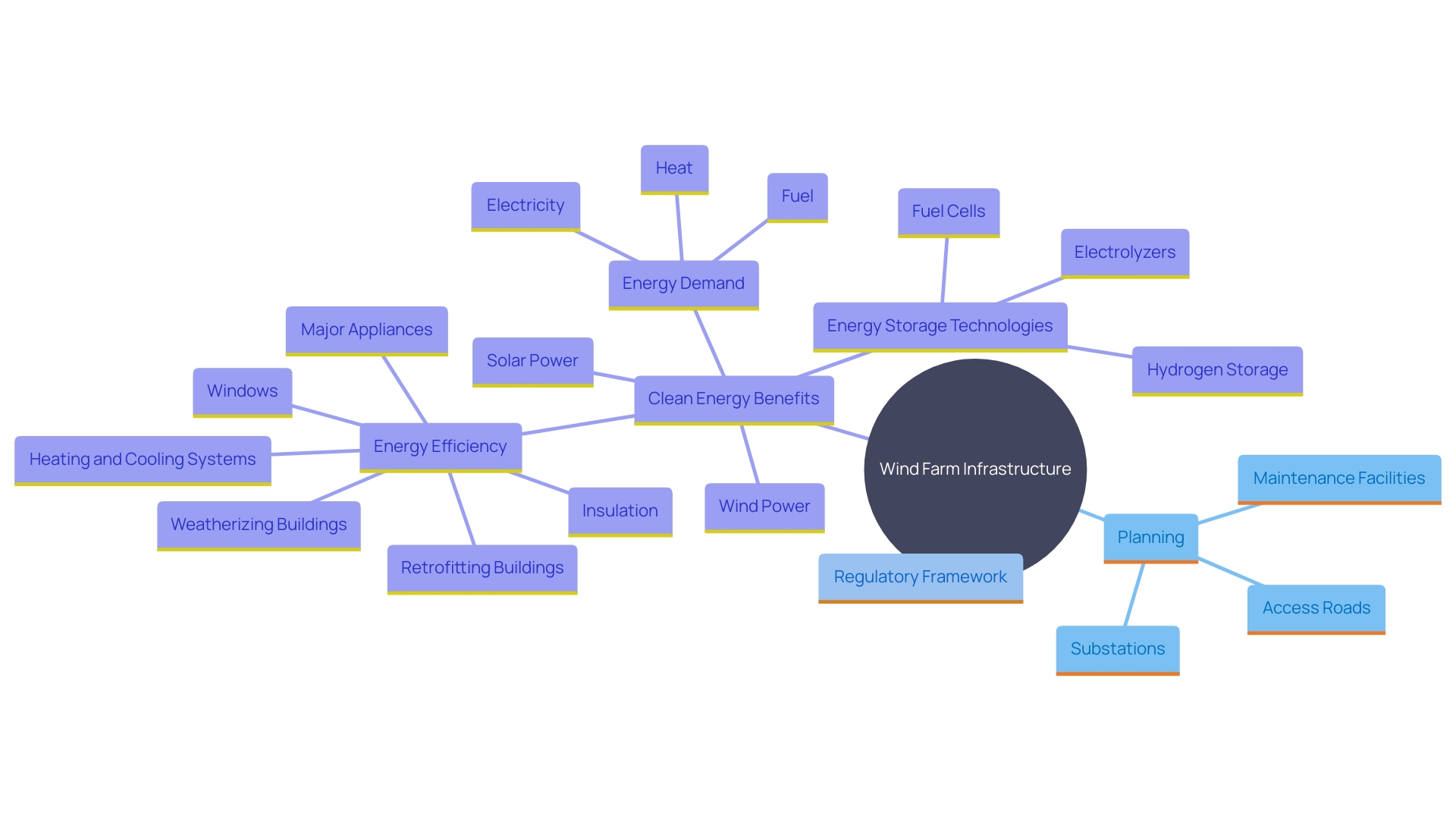
Leasing Land for Wind Farms: What Landowners Need to Know
Property owners contemplating renting their land for renewable energy development should fully comprehend the lease conditions and possible consequences. Key elements consist of the duration of the lease, compensation arrangements, and usage during the lease term. For example, Pete Ferrell, a landowner who initially resisted renewable energy development on his ranch, ultimately supported the project after recognizing its advantages and consequences. This highlights the importance of patience and education in the decision-making process.
Kaitlyn Spangler, an assistant professor in Agricultural Economics, emphasizes the need to consider the environmental and community impacts of such developments. She indicates that the position of the property and the balance of costs and benefits are crucial. Consulting legal and financial advisors is advisable to fully comprehend the benefits and responsibilities associated with such agreements. Moreover, studies have indicated that energy installations can have differing effects on property values based on their site, highlighting the significance of educated choice-making.
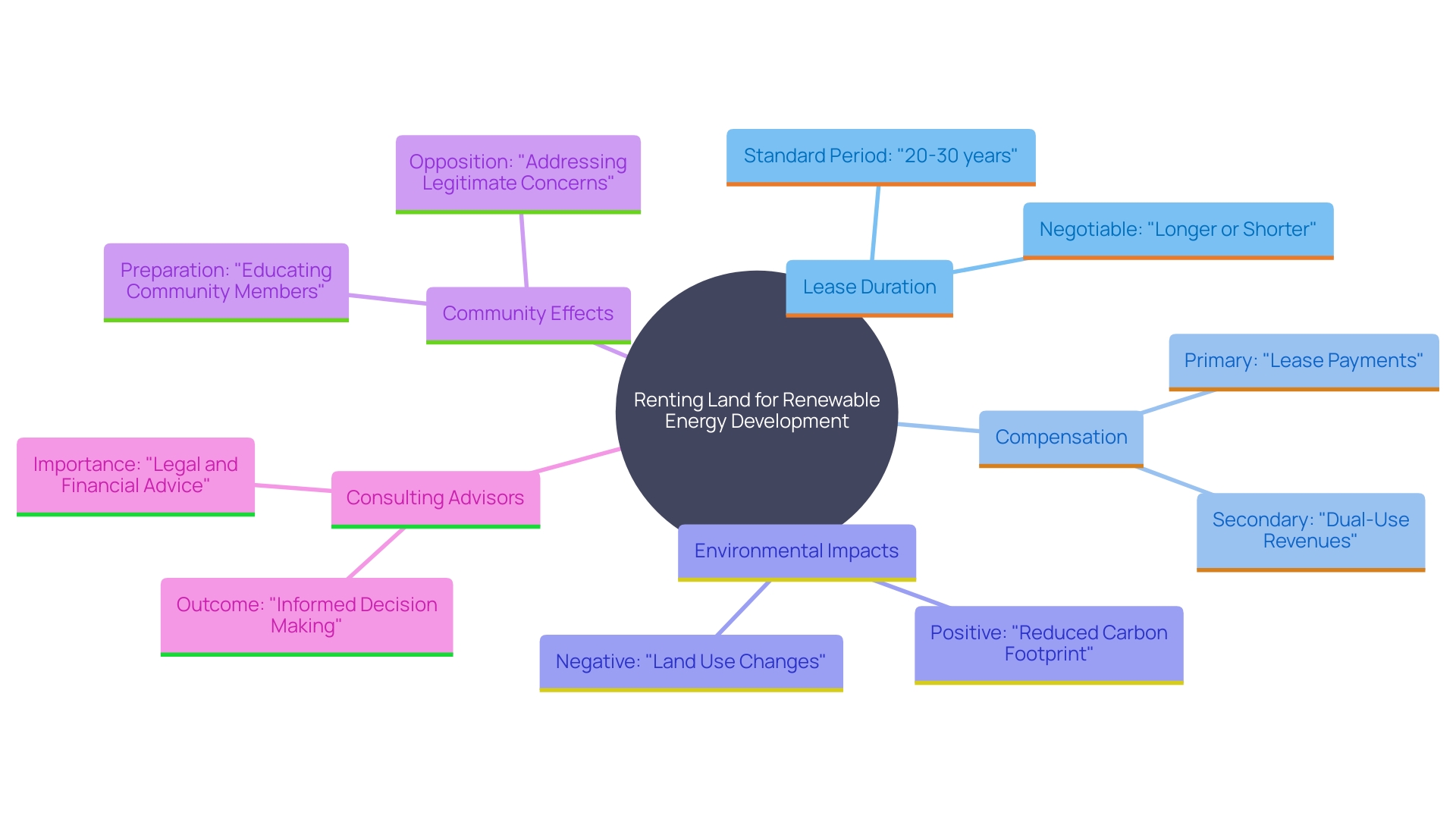
Economic and Environmental Considerations
The economic feasibility of wind farms is intricately linked to space requirements and the associated costs of acquisition or leasing. For example, the Asian Development Bank's investment in Viet Nam's 144-megawatt Lotus Wind Power Project highlights the significant economic contributions such projects can make, adding nearly $90 million to the GDP during construction and projecting almost $14 million in annual earnings over the next 20 years. However, the impact on local property values can vary significantly based on whether these projects are located in urban or rural areas, with urban installations often negatively affecting property values.
Environmental considerations are equally critical. As Kaitlyn Spangler, an assistant professor in Agricultural Economics, observes, the ecological and societal effects of terrain utilization for sustainable development initiatives must be thoroughly assessed. This includes evaluating the suitability of the land, such as flat, well-draining areas ideal for agriculture, which often leads to conflicts over land use. Conducting comprehensive environmental assessments is essential to mitigate potential negative impacts on wildlife habitats and local ecosystems, thereby ensuring compliance with regulations and fostering community support.
Moreover, the integration of renewable power initiatives requires effective community engagement and transparent communication to address opposition and build consensus. Studies show that local opposition often stems from legitimate concerns about the design and location of these facilities. Therefore, involving stakeholders in the planning process and addressing their concerns can significantly enhance the sustainability and acceptance of wind energy projects.
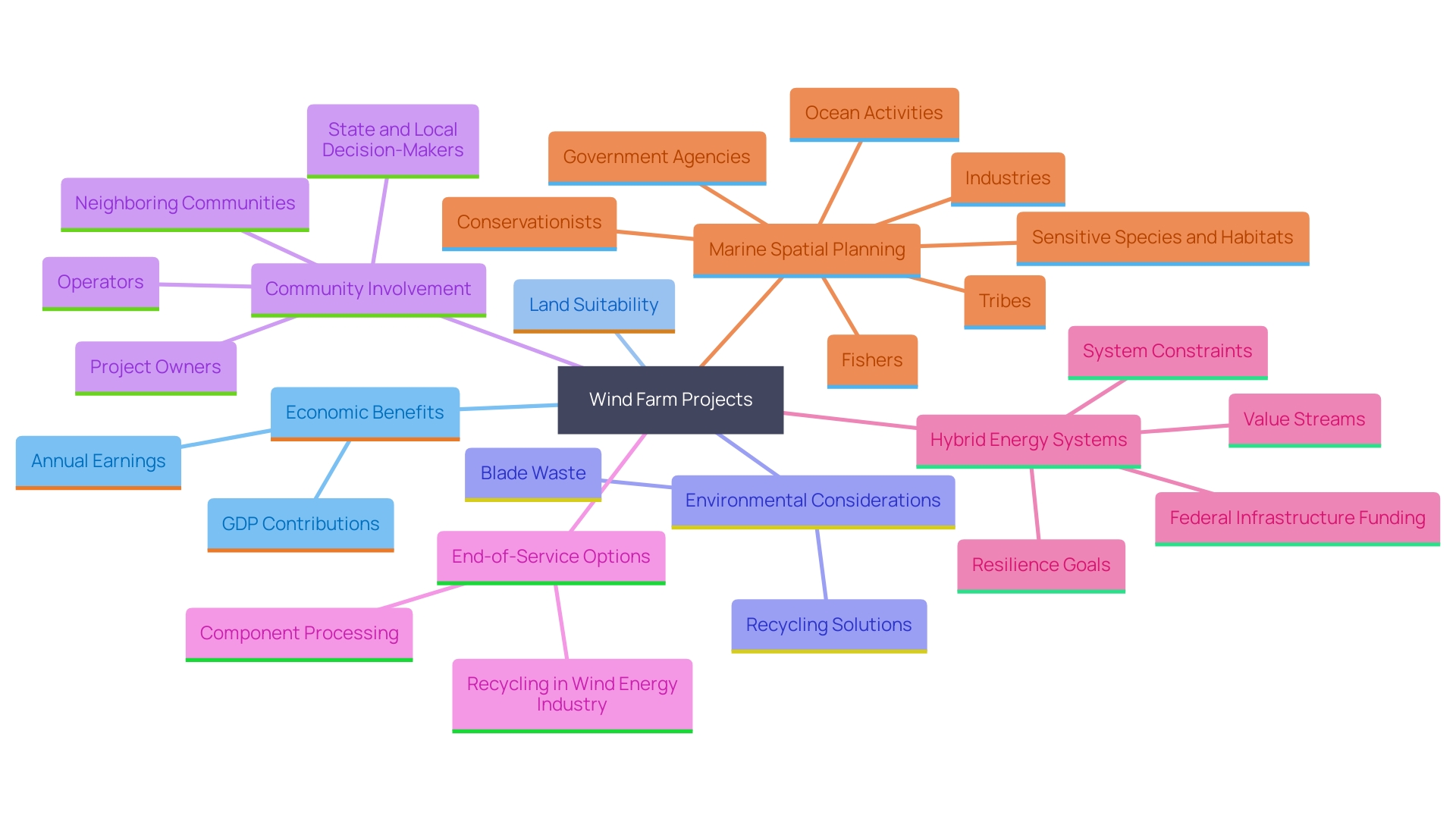
Conclusion
Identifying suitable land for wind farms involves evaluating key geographic and environmental factors, with wind potential as the foremost consideration. Detailed meteorological assessments are critical for determining average wind speeds, while proximity to existing infrastructure influences integration costs and logistics. Land use compatibility is also vital, favoring regions with minimal human activity to mitigate noise and visual impacts.
Land requirements vary based on turbine type, local zoning laws, and necessary buffer zones. Although a single turbine occupies 0.5 to 1.5 acres, optimal spacing for energy production can significantly increase the total area needed. Importantly, wind farms occupy only about 5% of the land, allowing for coexistence with agricultural uses.
Infrastructure needs extend beyond turbines to include access roads, substations, and maintenance facilities, all essential for effective operation and electricity distribution. Understanding these requirements and local regulations is crucial for successful project implementation.
For landowners considering leases, grasping lease terms, compensation structures, and environmental impacts is essential. Consulting legal and financial advisors can clarify benefits and responsibilities. The economic viability of wind farms is closely tied to land costs, and careful assessment of environmental impacts ensures compliance and community support.
In summary, developing wind farms requires a balanced approach to economic, environmental, and social factors. Strategic planning and informed decision-making are essential for fostering sustainable growth in the renewable energy sector.




